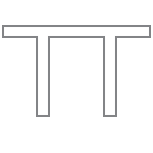Valerie Walkerdine
'The maternal line,' still from video installation and performance, Valerie Walkerdine, as part of the exhibition 'Alternative Maternals', Lindner Project Space, Berlin, 2014.
Valerie Walkerdine (PhD) is an artist and academic. As an academic she has taught, written and researched in the fields of critical psychology, affect studies, psychoanalysis, cultural studies, artistic practice and theory, social theory, class, gender and feminism, community and de-industruialisation and neoliberalism. Having wanted only to study art as a child, she did not pursue this for many years because, as a working class girl and the first person in her family to go on to higher education, it was presented as something that could not lead to stable and secure work. However, her ambition never left her and she went on to study art as a mature student, going on to combine artistic practice and research with academic work and writing.
Practice includes:
Installation, performance, film and video, photography, drawing, social practice/community engagement
Practice Statement
My practice works primarily with the opening to the affective, unseen, hidden and suppressed. How can we enter that which is stored in the ethereal realms of the felt, a felt that sometimes can be unreachable through words? How can we explore that which has often such a forceful presence in life and yet is constantly slipping out of our grasp? What I have called our ‘affective histories’ is a potent force, be it personal, national or international, to mapped deeply across time and space, at once felt and imagined.
I have made work which engages with this over a number of methods and genres: Installation, performance and writing, mostly.
One current project works with the affect generated in an astonishing community meeting in a very poor ex-mining community full of love, care and hope. The resulting installation currently in progress works with women and children in the community engaging with dark and light, past, present and future, life and death. The community response to my idea was itself deeply moving and shows how the deepest work might result out of shared trust and open listening.
My other current concern is with another kind of deep listening and feeling – in this case, to the energy of the land. As I sit in the same space, day after day, month after month, under the shade of a group of trees, the ground beneath my feet and the air around my body pulsates with life. How can I experience its wisdom, its teaching, to become one with the land itself?
Related research & practice areas:
ecology and environmental activism;
experimental pedagogies;
foreignness, otherness;
home, nostalgia and the uncanny;
language and image;
liminal states, interstices, and spacetime;
memory, forgetting, trauma and the archive;
movement, dance, choreography;
co-created community based art practice; performance; feminist art practice

